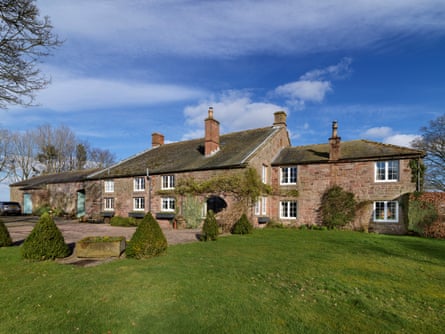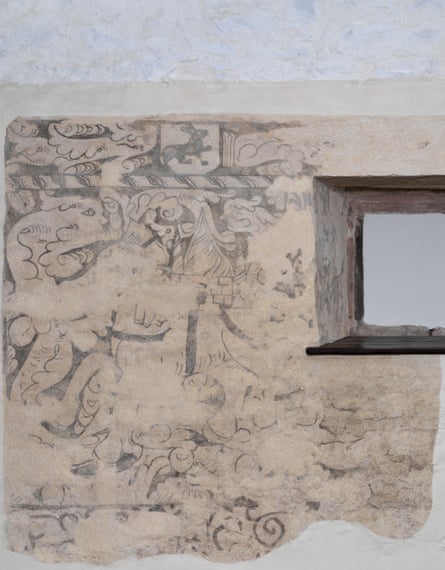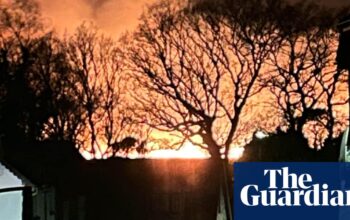Rare and fantastical 16th-century wall paintings which shine light on the interior design tastes of well-off Tudors have been revealed in a former hunting lodge.
Historic England said the wall paintings at The Ashes in Inglewood Forest, Cumbria, were remarkable and warranted extra heritage protection.
The black and white paintings most likely date from the reign of Elizabeth I and are essentially examples of how people with disposable incomes would then have decorated their homes.
One contemporary writer, Henry Peacham, described the style as “an unnaturall or unorderly composition for delight sake, of men, beasts, birds, fishes, flowers &c without (as wee say) Rime or reason.”

A section of Tudor wall painting was found at the property in the 1970s, but more recent work on the property’s main bedroom exposed additional paintings.
Andrea Kirkham, a specialist conservator who has worked on Tudor wall paintings for 40 years, was brought in by the house owners, Jen and Richard Arkell, to help out.
She said it had been a thrill. “It is fantastic because you are uncovering a painting that has not been seen for centuries. It is tangible evidence of the people who lived in the house in the 16th century.”
The paintings were of odd, grotesque beasts and “absolutely amazing, fantastic foliage”, said Kirkham. “They are all slightly out, they’re not symmetrical and it’s all very freehand. It’s lovely.”
Recent dendrochronological dating of the building’s timbers has revealed the roof over the earliest part of the house used timber felled around the winter of 1561-62, meaning the paintings could not have been done before then. Elizabeth I’s reign was 1558-1603.
The paintings are a rare discovery in Cumbria, but also nationally important. “The combination of motifs discovered here is unusual even by national standards,” said Myra Tolan-Smith, an adviser at Historic England. “This discovery provides remarkable insight into the evolution of a significant Tudor hunting lodge into a working farm.”

Jen and Richard Arkell bought the property more than 20 years ago when only a small fragment of wall painting was visible. “Removing old failing plaster to find these remarkable motifs and faces looking back at us is a moment we will never forget,” they said.
Their local MP, Markus Campbell-Savours, said: “It’s quite clear these paintings were a remarkable find and it’s wonderful news that they have now been protected as part of the building’s listing. We can only hope that local people can enjoy them and the history of Cumbria for many years to come.”
Kirkham said Tudor wall paintings were rare but could be seen in old buildings across England, although less so in the north of England. “It is a very unusual survival in Cumbria,” she said.
“They are social history … They tell us an awful lot about people’s tastes, attitudes, their ideologies, the way they use colour or the way they use materials, the designs they choose. They tell us about their interests and how they wish to be seen by others.”
Historic England said the main lodge building was already Grade II* listed but the amended list entry now meant that the wall paintings were included in the protection.
Source: theguardian.com


